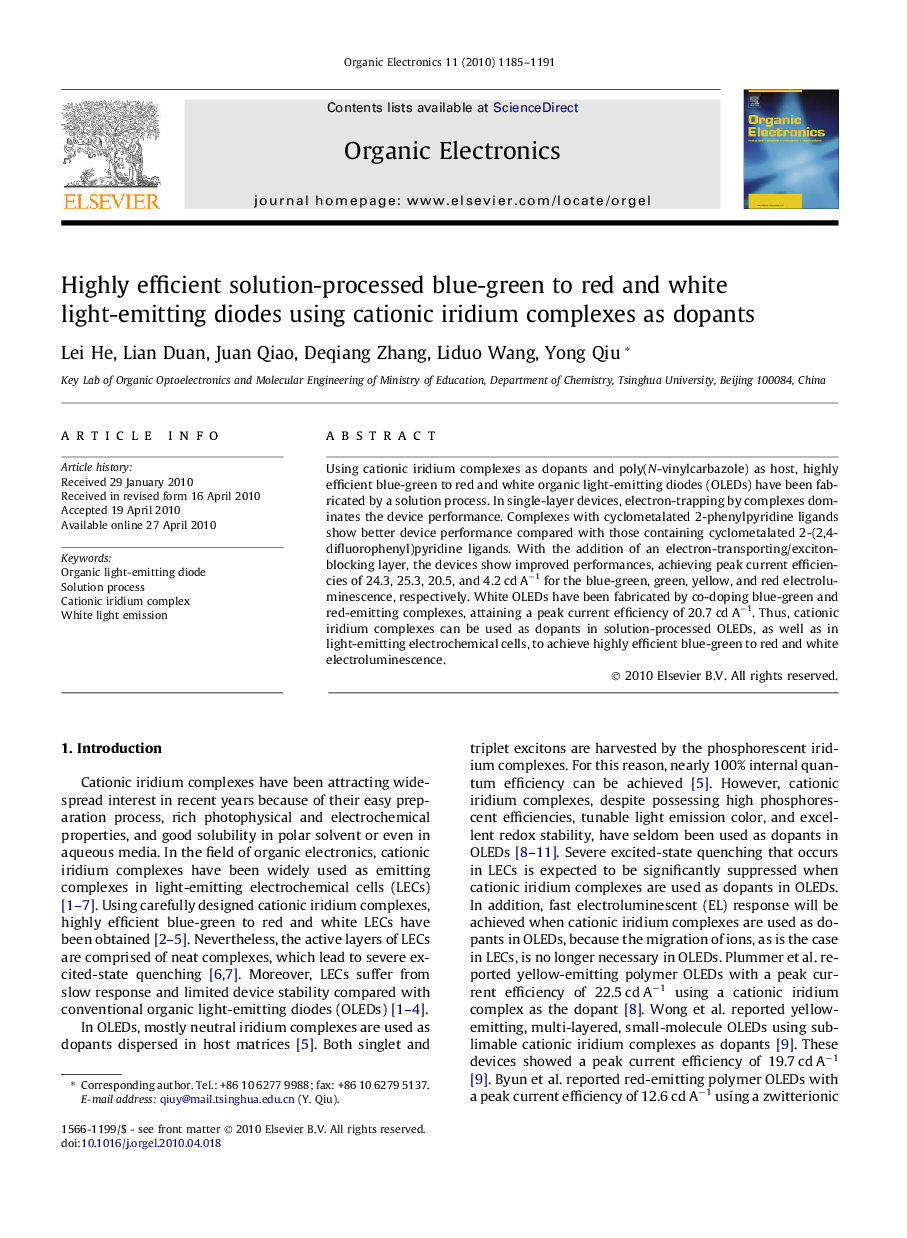| Article ID | Journal | Published Year | Pages | File Type |
|---|---|---|---|---|
| 1267805 | Organic Electronics | 2010 | 7 Pages |
Using cationic iridium complexes as dopants and poly(N-vinylcarbazole) as host, highly efficient blue-green to red and white organic light-emitting diodes (OLEDs) have been fabricated by a solution process. In single-layer devices, electron-trapping by complexes dominates the device performance. Complexes with cyclometalated 2-phenylpyridine ligands show better device performance compared with those containing cyclometalated 2-(2,4-difluorophenyl)pyridine ligands. With the addition of an electron-transporting/exciton-blocking layer, the devices show improved performances, achieving peak current efficiencies of 24.3, 25.3, 20.5, and 4.2 cd A−1 for the blue-green, green, yellow, and red electroluminescence, respectively. White OLEDs have been fabricated by co-doping blue-green and red-emitting complexes, attaining a peak current efficiency of 20.7 cd A−1. Thus, cationic iridium complexes can be used as dopants in solution-processed OLEDs, as well as in light-emitting electrochemical cells, to achieve highly efficient blue-green to red and white electroluminescence.
